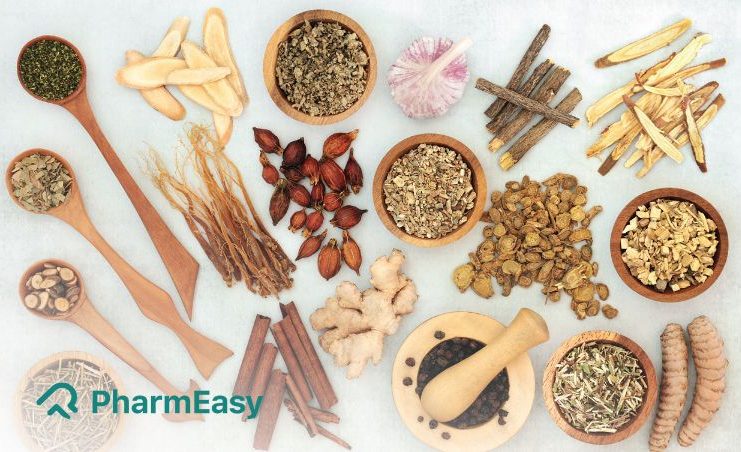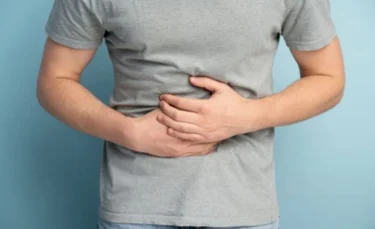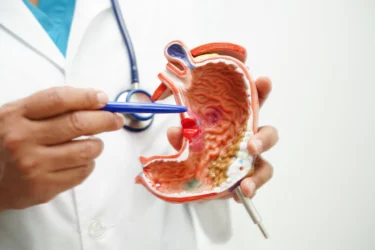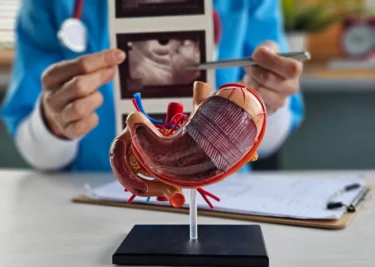Pancharishta: Uses, Benefits and Side Effects By Dr. Rajeev Singh
By Dr Rajeev Singh +2 more

Get,

to manage your symptom
Get your,


4 Cr+ families
benefitted

OTP sent to 9988776655



You’ve successfully subscribed to receive
doctor-approved tips on
Whatsapp

Get ready to feel your best.

Hi There,
Download the PharmEasy App now!!


Register to Avail the Offer
Send OTPBy continuing, you agree with our Privacy Policy and Terms and Conditions

Hi There,
Sign up on PharmEasy now!!
Trusted by 4 crore+ families

OTP sent to 9988776655



You have unlocked 25% off on medicines




Code: NU25
By Dr Rajeev Singh +2 more
Table of Contents
Ayurveda has enlisted the importance of various Arishtas (herbal decoctions) and Asavas (herbal infusion) which are self-fermented polyherbal preparations. These may be well known for the management of digestive and metabolic disorders. One such preparation is Pancharishta. Pancharishta is a traditional Ayurvedic polyherbal syrup (different herbs) popularly used for centuries in India. It is a combination of Asavas and Arishtas. This polyherbal Pancharishta is made by combining and fermenting thirty-five different Ayurvedic herbal plants. Pancharishta may be considered a unique medicinal wine. It is a self-formed alcoholic preparation that may contain approximately 12% of alcohol. Pancharishta syrup formulations may have been used widely from the ancient period without knowing any side effects1,3. Let us discuss the health benefits of Pancharishta, its nutritional ingredients, potential uses and more.

Below listed are the ingredients of Pancharishta (Value in %):
Pancharishta may also contain other ingredients such as ajwain, clove, sugar cane, cumin, coriander, aloe vera and Kunwa (Yeast). It may also contain bioactive phytochemicals like phenol, tannin, saponins, glycosides, carbohydrates, flavonoids, gingerol, piperine and alcohol1,3.
Pancharishta syrup may include the following biological properties:
As Pancharishta is a polyherbal solution prepared by fermentation, it might have detoxification effects on the body due to the presence of various flavonoid and phenolic compounds.
Dr. Siddharth Gupta, B.A.M.S, M.D (Ayu)
The following may be the potential uses of Pancharishta syrup:

Hyperacidity is caused due to rise in digestive juices creating an acidic environment in the stomach. It may cause heartburn, indigestion, gas etc. An animal study3 by Adhikari et al. 2018 found that Pancharishta contains herbs that may reduce the secretion of stomach acid and increase the pH in the stomach. Thus, it may help in lowering stomach acids and relieving hyperacidity. However, human research is needed to conclude the use of Pancharishta for hyperacidity. If you experience frequent acidity, consult a specialist doctor. Avoid self medication.

Pancharishta syrup is a fermented decoction. It comprises several ‘good bacteria’ which may enhance the digestion process. It may be used as a digestive tonic which may help release digestive enzymes allowing proper digestion of food. It also contains ingredients like Tvak, Lavanga, Tvakpatra and Dhanyaka these are carminative herbs. These may contribute to carminative activity releasing flatulence, bloating, gas and indigestion. Adhikari et al. 2018 suggest Pancharishta may help with digestion in animals. Further human studies are expected to support the benefits of Pancharishta for digestion1,3. If you have digestion problems take the doctor’s advice. Do not self-medicate.
Pancharishta is a polyherbal medicine made by ancient Ayurvedic methods known as Arishta and Asava. It is commonly used as a digestive and cardioprotective tonic.
Dr. Rajeev Singh, BAMS

People might experience stomach pain and stomach cramping due to various digestion issues. An animal study3 by Adhikari et al. 2018 reported that Pancharishta may have anti-spasmodic activity. It may help contractions of stomach muscles. It may assist in relaxation and stop cramps in the stomach and intestine. This may help reduce stomach upsets and pain. Further studies are needed to completely understand the effects of Pancharishta on stomach cramps. Consult a qualified physician and take Pancharishta only if recommended.

Gastric ulcers happen due to an imbalance in stomach acids and bacterial infection by Helicobacter pylori. A study3 by Adhikari et al. 2018 observed that gastric ulcers may be reduced with the polyherbal formulation of Pancharishta. It may have the action of safeguarding the stomach mucosal lining and maintaining its structure. Hence, Pancharishta may help preserve the cell lining of the stomach and defend against gastric ulcers. However, this is an animal study, more human studies are required to find the true Pancharishta uses for ulcers. Take medical help if you have gastric ulcers. Self-medication is not recommended.

Gastroparesis is a condition that may affect the regular movement of the muscles in the stomach. This might hamper the stomach emptying. An animal study3 by Adhikari et al., 2018 discovered that Pancharishta ingredients may help empty the stomach. This property has been confirmed in animals however, human studies are awaited to support the true use of Pancharishta for stomach emptying. Consult a doctor if you are experiencing stomach issues.

Though studies show the potential uses of Pancharishta in various conditions, these are insufficient and there is a necessity for further studies to develop the scope of the benefits of Pancharishta on human health.
You should consult a qualified doctor before having Pancharishta in large quantities. Do not discontinue or replace an ongoing modern medical treatment with an ayurvedic/herbal preparation of Pancharishta without consulting an ayurvedic physician. They will guide you with its form and dosage per your health condition.
However, more human research is needed to study the side effects of Pancharishta in humans. You must always consult your doctors and get the proper treatment if you come across side effects.
Also Read: Kumaryasava: Uses, Benefits, Side Effects & More!
Pancharishta in the prescribed dose might be safe. However, having it in larger amounts may produce harmful effects. Therefore, a few precautions are essential:
Also Read: Gulkand(Rose Petal Jam): Uses, Benefits, Side Effects By Dr. Smita Barode
Furthermore, clinical studies are required to suggest the herb-drug interaction between Pancharishta and other medicines. We direct that you consult with a doctor before taking Pancharishta preparation and only take it in the given dosage.
Also Read: Guduchi (Giloy): Uses, Benefits, Side Effects and More!
Pancharishta is an Ayurvedic decoction formulation of thirty-five different Ayurvedic herbs. It is a combination of Asava and Arishta. Pancharishta syrup is an alcoholic preparation that may contain 12% of self-generated alcohol. It has been widely used for all stomach-related disorders1,3.
Pancharishta properties may include carminative, laxative, antioxidant, anti-ulcer, digestive, anti-inflammatory and anti-spasmodic. It may help enhance immunity, reduce stomach acidity and help maintain liver health1,3. If you have any such issues consult with your doctors and avoid self-medication.
Pancharishta may contain thirty-five different plant ingredients. The major ingredient of Pancharishta may be a flower called Dhataki (Woodfordia fruticosa)1,2.
Overdosing on Pancharishta should be avoided. It contains a moderate amount of alcohol1. Therefore, excess consumption of Pancharishta might cause symptoms such as vomiting, mental confusion, dizziness, etc. It is best to avoid overdosing and if any complication appears immediately, seek medical help.
No studies have reported the safe use of Pancharishta during pregnancy. Pregnant women should always consult their doctors before using any Ayurvedic preparations such as Pancharishta. They will advise you on the best form and dosage. Do not self-medicate.
Disclaimer: The information provided here is for educational/awareness purposes only and is not intended to be a substitute for medical treatment by a healthcare professional and should not be relied upon to diagnose or treat any medical condition. The reader should consult a registered medical practitioner to determine the appropriateness of the information and before consuming any medication. PharmEasy does not provide any guarantee or warranty (express or implied) regarding the accuracy, adequacy, completeness, legality, reliability or usefulness of the information; and disclaims any liability arising thereof.
Links and product recommendations in the information provided here are advertisements of third-party products available on the website. PharmEasy does not make any representation on the accuracy or suitability of such products/services. Advertisements do not influence the editorial decisions or content. The information in this blog is subject to change without notice. The authors and administrators reserve the right to modify, add, or remove content without notification. It is your responsibility to review this disclaimer regularly for any changes.
Comments

Leave your comment...
You may also like
Comments